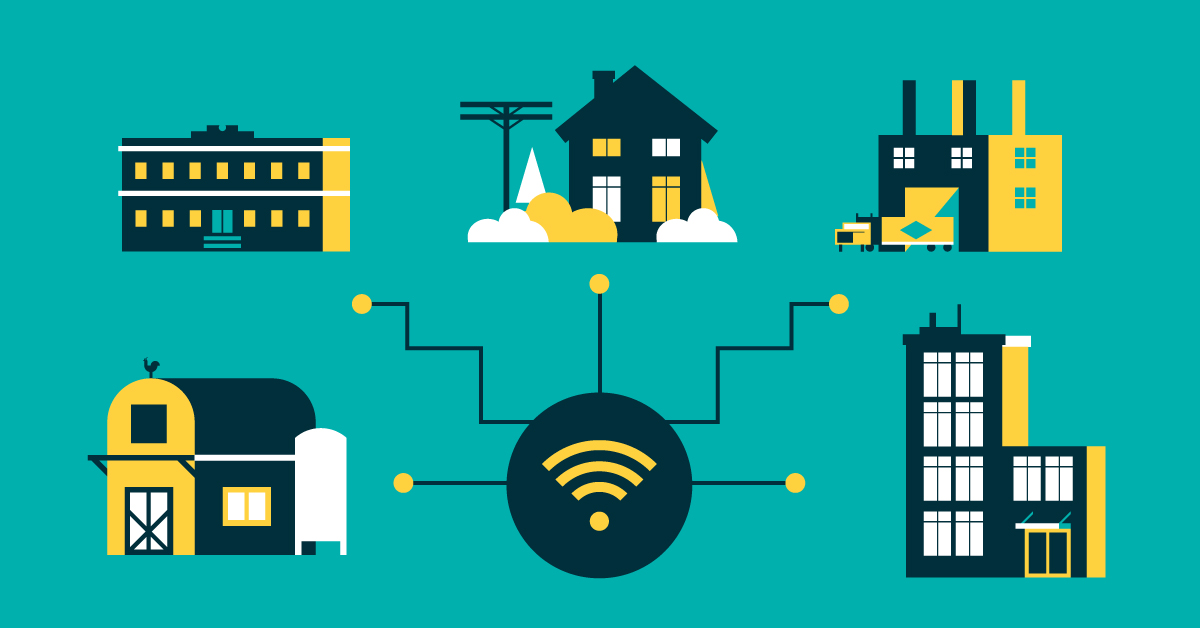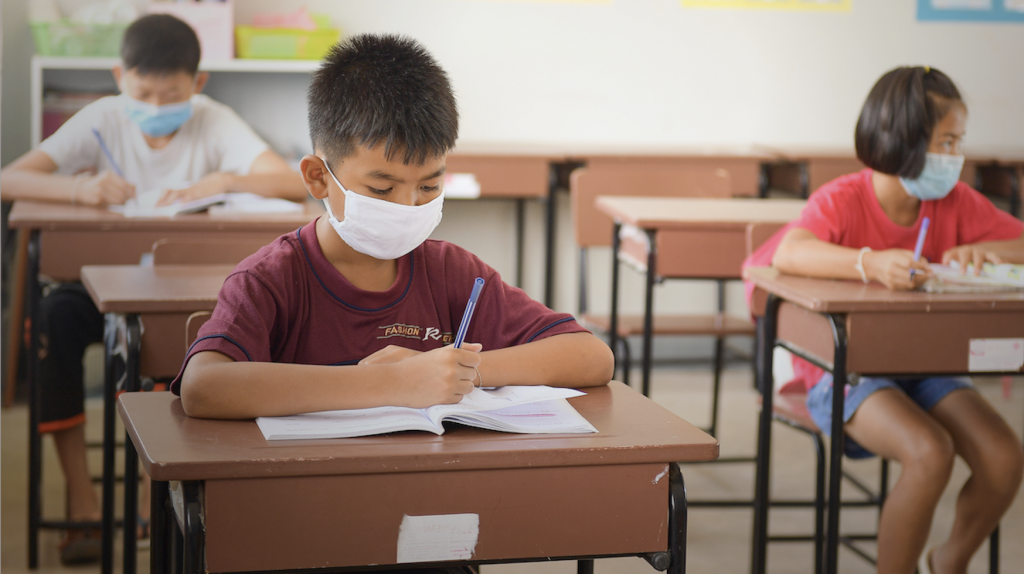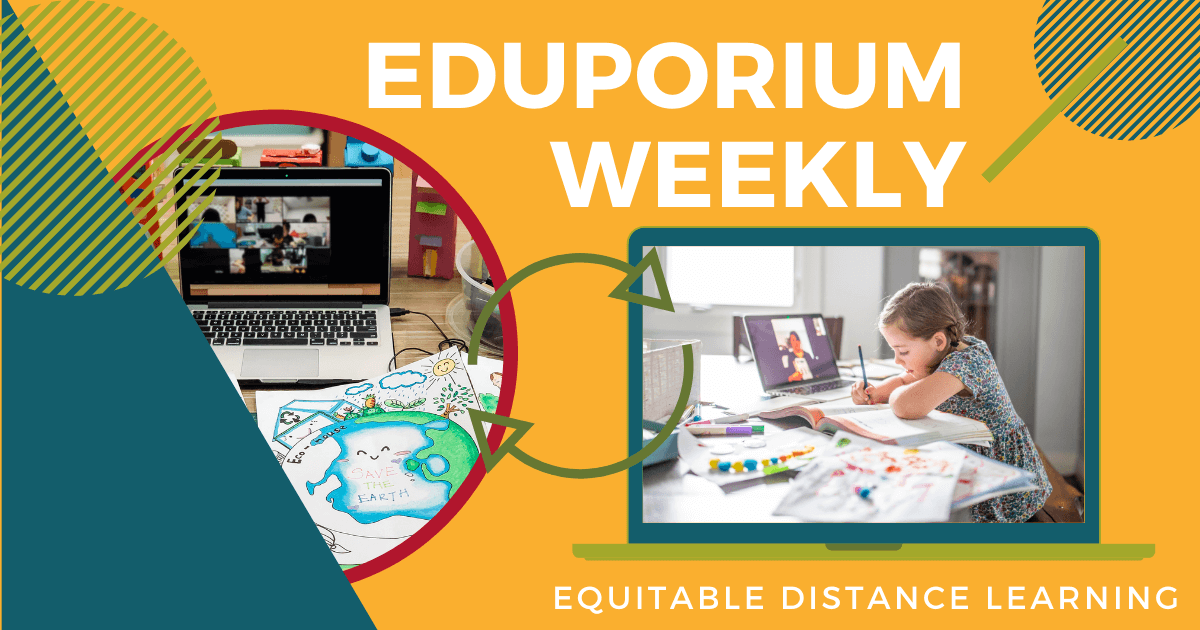Let’s be clear. Not all distance learning opportunities are equal. So many take access to reliable Internet in every household for granted. The simple fact, however, is that it's not universal. For thousands of students, physically attending school is the most notable way for them to connect with others. This may be because they live in very rural areas without strong Internet coverage or they might have economic limits preventing them from paying for an Internet plan but we know that Internet access isn’t guaranteed for every student, meaning that equity in distance learning is nearly impossible. So, for educators, learning each student’s situation can hopefully help them create solutions so they can continue receiving their education.
Things to Know About Distance Learning Equity
We’ve talked a lot about many students not having reliable Internet access since everything shifted online in March so we’ll try not to repeat too much. A similar situation that’s equally problematic, however, is kids not having guaranteed access to the devices they need for learning. To continue learning, students need a laptop or a desktop computer, which isn’t available in every household. Even if they have a computer, their parents might need it for work or siblings might need it. Despite the fact that, in some districts, every child receives a laptop, this is simply not true for every student. So, it creates a very noticeable gap in equitable distance learning and one we can’t fix by giving students tablets.
The Digital Divide is not equal.
We’ve also seen that this digital divide disproportionately affects students in low-income areas and those within certain racial or ethnic groups. To help tighten this gap, school and district leaders must first be able to measure it and create a report of where a lack of device and Internet access is most prevalent. Knowing who doesn't have access to devices, for example, allows district leaders to prioritize them if just some are available. There’s also the technical side of things, however, and sometimes student devices break. There’s not always a plan at the district level for troubleshooting technical issues, repairing devices, or handing out replacements. Designing a plan and providing pre-emptive troubleshooting tips for parents can also help.
Understanding how connectivity affects students.
Since student access varies, many educators must vary instruction to best serve everyone. District leaders have also had to be more flexible in what they allow educators to do since some of them are able to record asynchronous lessons for students to view and complete on their own. Others might not have the capacity and would prefer synchronous lessons in which everyone is on video together. The flexibility teachers need is growing, especially when it comes to device and access limitations for students. It’s inevitable that, even in well-connected areas, kids will have issues at one point and they can’t worry about penalties. Guidance on different types of teaching and how they help students is something that could truly help teachers.
Developing a Clearer Understanding of Equity
Beyond typical students who are from underserved areas, other groups of student have helped to expose inequities since the beginning of remote learning. These, most notably, include special education students, English language learners, and others. Knowing these different student populations need different types of instruction already poses some equity issues but ensuring that every student gets what they need from a distance is nearly impossible, so the next best thing has been teachers doing everything they can despite those efforts likely being less effective than they'd be under normal circumstances. Even if these particular groups of students are fully able to access everything remotely, some may have experienced learning gaps while their school leaders figured out a plan and, as a result, may be in need of increased attention anyway.
Why equity is so important.
To address shortcomings in equity, especially in remote learning, everybody needs a clear understanding of what exactly equity means. Understanding where you’re starting and where you want to be can help you with ultimately achieving equity in learning. Surveys offer one useful strategy for school and district leaders to assess what kind of access each student has as well as other factors that they could potentially address to help level the playing field. Basically, teachers can't make impactful changes without first measuring the scope of the current situation. That’s why surveys are valuable—they can help spark crucial conversations that could ultimately lead to changes students need.
The importance of the distance learning environment.
In education, the term ‘equity’ refers to situations in which all students can learn at a high level when they are provided with enough support from teachers and, to some extent, administrators. These environments within which they learn also play a role, so it is important that the distance learning experiences are closely monitored. Equity also means each child has the opportunities and the means to participate in lessons and class activities and to feel comfortable doing so. Educators can help by utilizing positive reinforcement and involving students of all demographics equally. Finally, one of the best ways to achieve equity—though it's often more work—is to identify and accommodate learning differences in the most vulnerable students. In doing this and emphasizing accessibility, the equity field can become more leveled.

Other Ways Students Need Remote Support
There are different types of underserved students and those who require special attention in the classroom. Children with special educational needs fall into this group and those challenges with providing the support they'll need throughout the remote learning period have been difficult. These types of classes and support are obviously provided to special education students under normal circumstances but it’s much tougher for school and district officials to accommodate them remotely. Parents of kids with special learning situations are also feeling burdened—not only with providing educational support for their kids but also to find a way to provide some form of socialization. District leaders can sometimes provide parents of special education students with modified lesson plans. Ensuring they have access to occupational therapy and other crucial services, however, is not as easy—especially virtually.
IEPs in distance learning.
For remote special education to be effective, many kids require individualized support, which falls largely on parents. Special education professionals can create lessons and provide guidance but parents won't all necessarily have the expertise to deliver this effectively. Creating individual education plans (IEPs) for these students is very time consuming and, as we have touched on, they may need to be modified if any parents don’t have typical Internet access or it’s not reliable for supporting live streaming video, for example. Some kids may even find it physically harmful or stressful to be working on the computer all day, which has led to educators being required to print and mail materials for their parents to go over with them. These teachers are also often on individual meetings with students trying to get them the additional support they need.
Experiencing hurdles in learning gains.
Other groups, like English language learners, also need focused instruction and being out of the classroom has stunted their development. They may not receive lessons or instruction in their preferred language or it may take specialists from the school or district extra time to translate the resources these students need. Like with many other students, creating a structured and routine-centered learning plan is key. Parents also might want to consider that, with the isolation throughout this time, they’re not hearing many conversations in English. They should try to use English with their children as much as possible, especially if their learning calls for it. Finally, social-emotional connections are equally important for English learners and prioritizing relationship building in these brief interactions can be transformational.
Addressing Potential Issues in Equitable Access
When it comes to equity, the big issue in distance learning is that not all students are likely to have access to a strong Internet connection 100 percent of the time. We already know this but there are also dozens of more specific issues that could arise as time goes on. Access to the Internet can mean that students have access to the learning environment they once knew but, in most cases, Internet access that’s fast enough is also necessary. When learning remotely, most students need strong connections because they’re either meeting live with teachers or streaming pre-recorded lessons. Either way, watching long videos requires a strong connection to help students feel included and help alleviate potential learning disruptions.
Creating equitable distance learning lessons.
Assuming that each student is present for each class (meaning they have strong Internet), educators could then prioritize equitable participation. This is another way in which equity may come into play—similarly to how it would in in-person classrooms. Designing lessons for remote learning can be kind of tricky but, if teachers use models similar to how they design in-class lessons, they can use a lot of the same strategies to help drive equitable participation at every possible corner. Teachers should also remember that student issues with remote learning are all unique, including potential Internet and device access issues. Some of your students' siblings might also need devices at the same time as them, too. Plus, some students may be uncomfortable with using video chatting tools to communicate with their peers and teachers.
When to require students to use video.
That last one is a common topic as teachers are wondering if they should require kids to leave cameras on. Some think it’s necessary for knowing whether students are paying attention or struggling while others may think it’s an unnecessary enforcing of rules that has no real effect on student performance and can perhaps affect their comfort. If this does come into play, one suggestion is to consider if video is necessary for each lesson. Giving students the option to turn video off could save bandwidth, plus using too much could even create data overages if they’re connecting from their mobile devices. Constant video chatting can also use storage space on both student and teacher devices, making recorded lessons an alternative option. Since online learning is still new and some kids may struggle with emotional issues, keeping video off is fine.

Closing Equity Gaps As Learning Continues
The quick onset of the pandemic resulted in some quick training and rapidly distributing learning materials. Though there was more time to prepare for the start of the new school year and this potential second wave of mass infections, it’s still going to affect equity among many students throughout the world if they have to revert back to distance learning. As we know, these equity gaps don’t affect every child and every family. In many cases, we can compare the equity gap to the achievement gap meaning that it has a more profound effect on students from certain backgrounds, like Black or Hispanic children or children whose families live in certain areas. Parents in this situation also hold certain feelings about in-person vs. remote learning and those concerns contain some vital information. In fact, many of us were previously unaware of a lot of it.
Using what we know from the past.
Theoretically, the lessons education leaders learned in the spring and summer could come into play during this time. Educators have also gained insights into supporting special education students, English learners, and homeless students as they navigate remote learning. One option to amplify equity is for school leaders and teachers to establish connections with students and parents. Prioritizing connections and focusing on communication has helped educators provide more effective and personalized solutions for students since they know more about what they specifically need. At the district level, for example, reallocating funds with a focus on serving more vulnerable students is often necessary. Also, requesting input from multiple areas, including parents and students, has helped better inform and equip administrators.
Infusing SEL in distance learning.
As for teachers, so many are focused on the social-emotional health of their students (and prioritizing their own). Professional learning opportunities now routinely include tips for SEL and on providing differentiated support for students with different needs. Academically, it’s been tough on everyone to ensure students are challenged and continue moving forward in remote learning. To assist them, however, try challenging them with targeted assignments instead of busy work that plateaus intellectual and creative development. It may start with assessing equity levels within a school or district and attempting to these key divides. Then, from there, learning what students have, don’t have, need, and don’t need can help with bolstering equity. And, then, hopefully, you can come out above water on the other side—whenever that may be.
For the latest EdTech, STEM, and 21st century education news, follow us on Twitter and Instagram. Like us on Facebook, too, or sign up for our newsletter for our latest product announcements and offerings. If you have an idea for an Eduporium Weekly theme, send us a message on social media or comment below. To learn more about our distance learning solutions, you can also contact our team.



